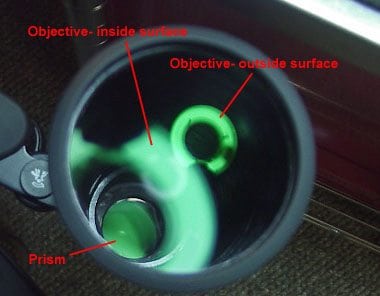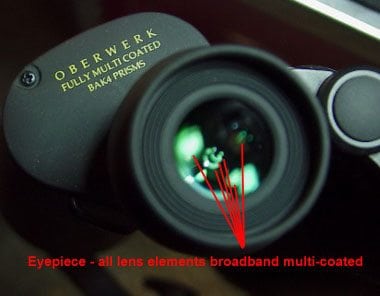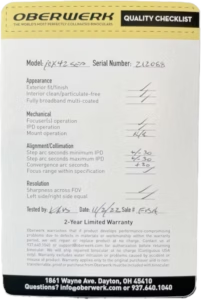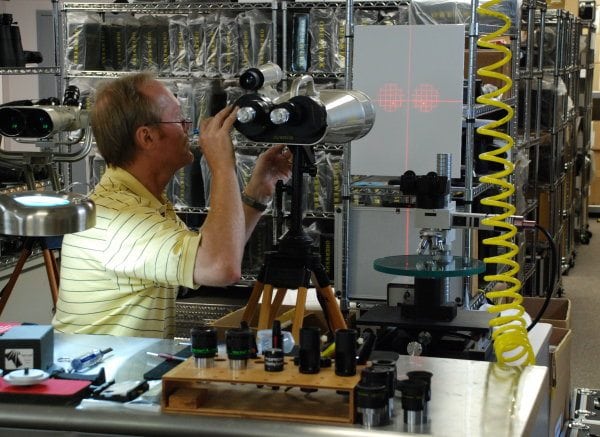Some OBERWERK® binoculars may look very similar to other brands, but there are important differences:
 All OBERWERK® binoculars feature highest-quality BAK4 prisms, which give the best performance across the entire field of view. Competitors often use less-expensive BK-7 prisms, which darkens the image near the edges of the field of view.
All OBERWERK® binoculars feature highest-quality BAK4 prisms, which give the best performance across the entire field of view. Competitors often use less-expensive BK-7 prisms, which darkens the image near the edges of the field of view. OBERWERK® center-focus binoculars feature “slow” focusers that require more than one turn of the focus wheel to move from one end of the focus range to the other. Other brands utilize “fast” focusers that move from one end to the other in less than 1/2 turn of the focus wheel. Unlike competitor’s “fast” focusers, OBERWERK® “slow” focusers have a more precise adjustment, and will not drift from pressure on the oculars.
OBERWERK® center-focus binoculars feature “slow” focusers that require more than one turn of the focus wheel to move from one end of the focus range to the other. Other brands utilize “fast” focusers that move from one end to the other in less than 1/2 turn of the focus wheel. Unlike competitor’s “fast” focusers, OBERWERK® “slow” focusers have a more precise adjustment, and will not drift from pressure on the oculars.


Don't have an account? Click here to register.